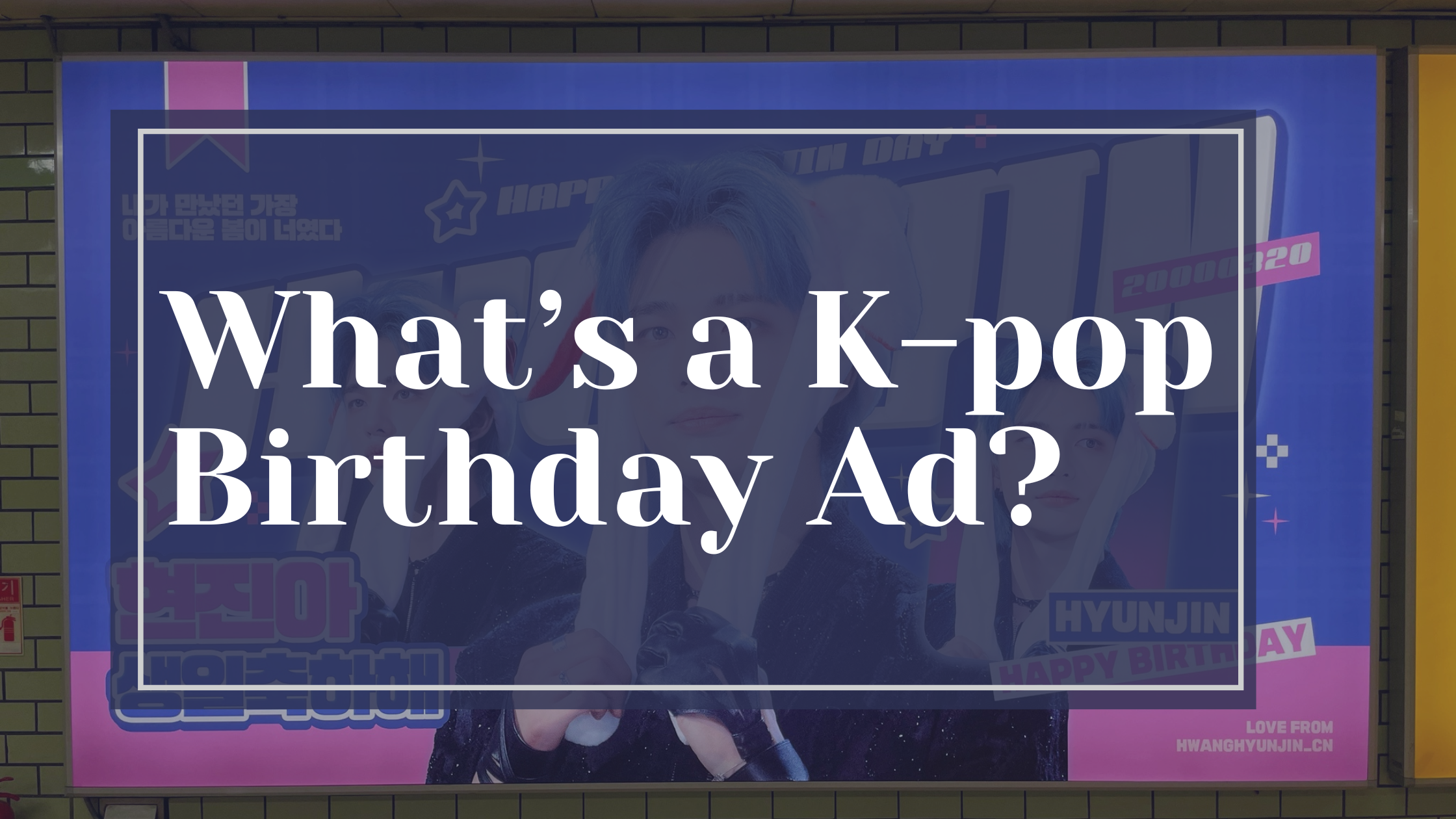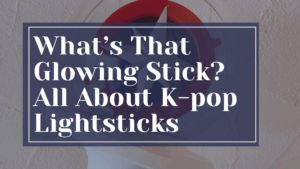Ever seen a subway ad for a K-pop idol and wondered, “Who paid for this?”
It wasn’t the company — it was the fans.
In K-pop culture, birthday ads (생일 광고 / saeng-il gwang-go) are one of the most iconic ways fans show love. Here’s what they are, and why they matter.
💌 Want more K-POP deep dives like this?
Subscribe to Hello Bias Letters, our free Substack newsletter!
Each week, we unpack K-POP culture with care—from fan behavior to behind-the-scenes stories.
→ Join us here
What Is a “Birthday Ad” (생일 광고 / saeng-il gwang-go)?
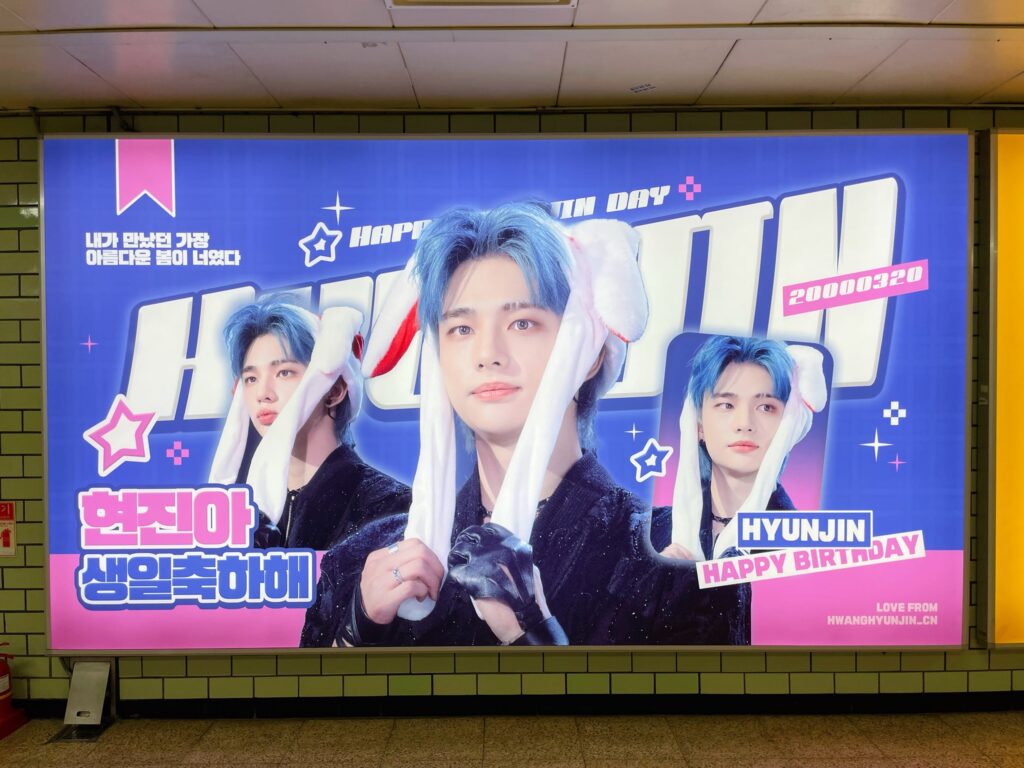
In Korean, saeng-il (생일) means “birthday” and gwang-go (광고) means “advertisement.” Put them together, and you get “birthday ad” — a term fans often pronounce as “saeng-il gwang-go ” in Korean.
If you’ve ever visited Seoul, you’ve likely seen one: subway ads, bus stop billboards, glowing screens in shopping districts — all celebrating an idol’s birthday.
These ads serve two purposes: to celebrate their idol, and to make sure the world knows about them.
Where Do Fans Put These Ads?
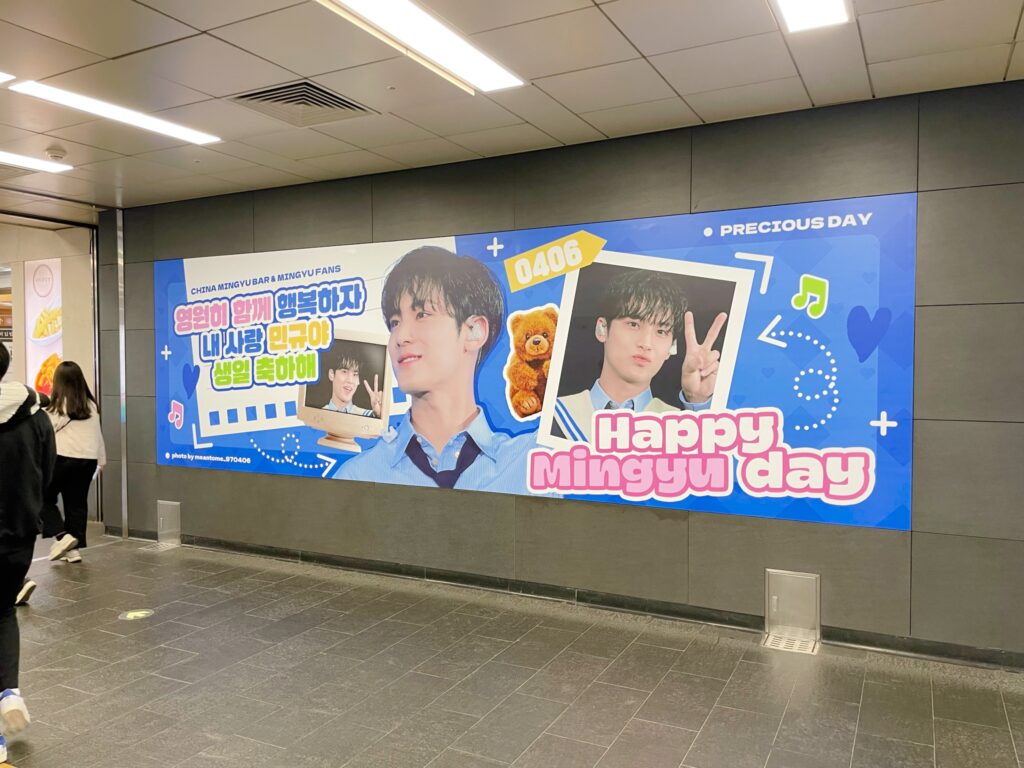
Everywhere — seriously.
Birthday ads show up on subway walls, buses, digital billboards, cafés, and even on cup holders. In recent years, fans have taken things further by renting ad trucks that circle through major city streets.
What started as a uniquely Korean phenomenon is now global.
Whether it’s Japan, China, the U.S., Europe, or Southeast Asia, fans across the world pitch in — or sometimes even pay solo — to run these ads for their favorite idols.
Why Do Fans Do It?
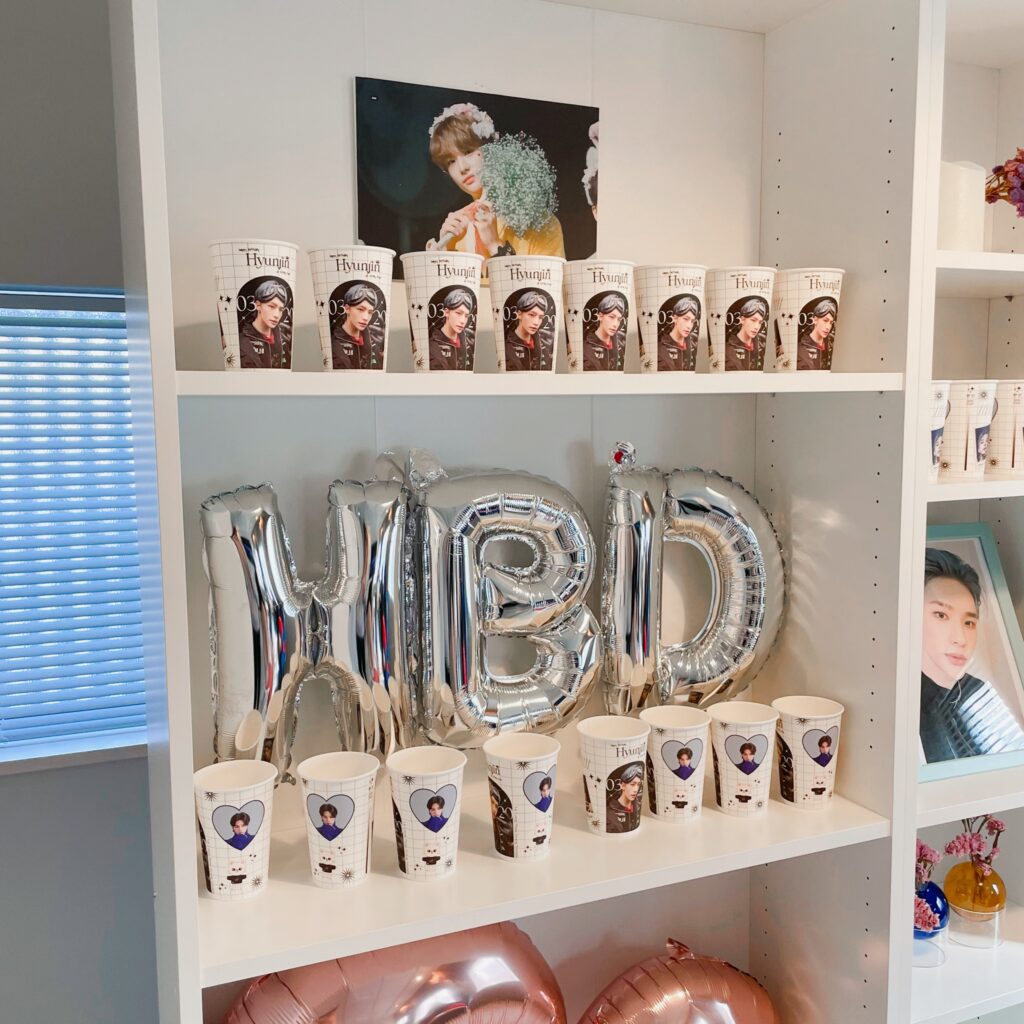
So why spend real money on an ad that doesn’t sell anything?
For many fans, it comes from a simple desire: “I want to do something for my bias.”
Some want to celebrate, some want to raise awareness, and others… well, sometimes it’s low-key competitive. (“Look how much I’ve done for them!”)
Still, in most cases, birthday ads are just fun — a festive, collaborative way for fans to show love.
Not Just Korea — It’s Global Now
Today, birthday ads can be found around the world.
Some projects are massive, funded by dozens of fans; others are more modest but just as heartfelt.
For many, the joy isn’t just in the ad itself, but in creating something together.
I’ve even traveled to Korea just to see birthday ads in person — and let me tell you, it’s more than an ad. It’s a celebration, and the atmosphere is electric.
Controversies & Criticism
In Korea, birthday ads were long tolerated by entertainment companies, largely because they functioned as free PR.
But as K-pop has gone global, some fans and observers have started to ask: “Isn’t this a violation of portrait rights?”
This has sparked debate — should fans be allowed to use idols’ images without permission?
Supporters say it’s pure love; critics argue it’s exploitation.
In truth, both sides are usually acting out of love. Either way, the ads prove how deeply idols are cherished.
Final Thoughts – It’s More Than Just an Ad
Birthday ads might sit in a legal gray zone, but they’ve become a beloved tradition for many fans — almost like a festival.
If your bias’s birthday is coming up, check X (formerly Twitter) for announcements about ad locations and dates.
And if you’re ever in Seoul, don’t miss the chance to see one in person. It might just become your favorite part of K-pop culture.
📝 Want to learn more K-pop fan terms? Check out our glossary [here].
💬 If you found this post helpful, consider supporting me with a coffee!
Your support keeps Hello Bias going ☕💛
👉 Buy Me a Coffee
